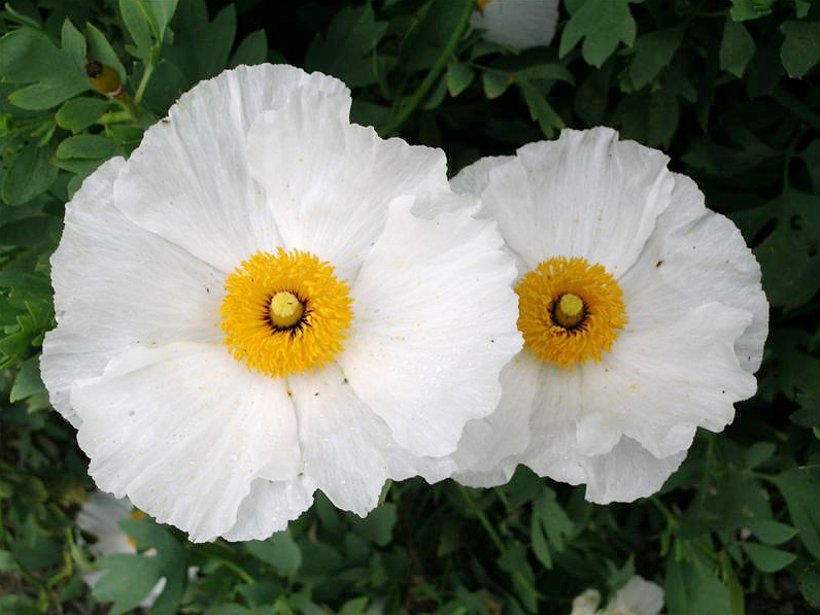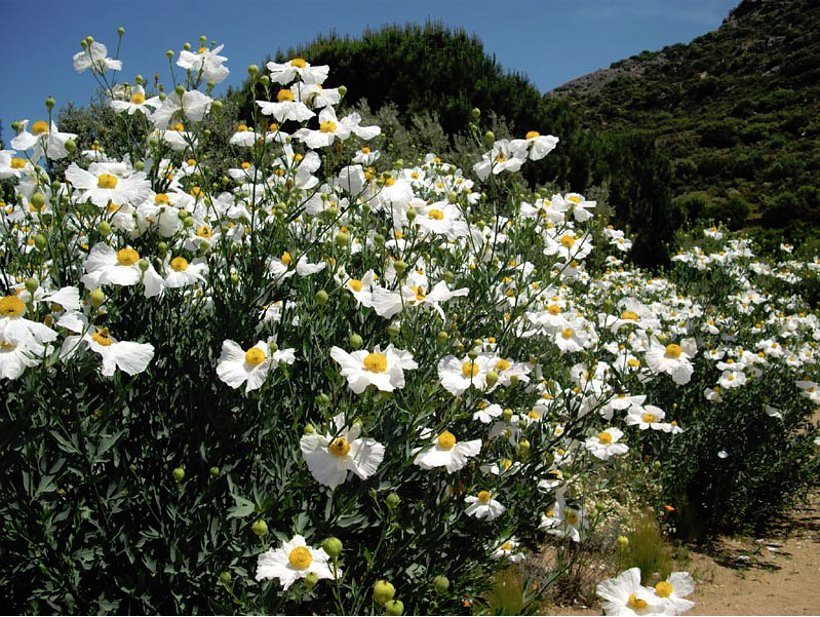Abutilon vitifolium is a large, handsome ornamental flowering plant from the mallow family. Native to Chile is was first introduced to western garden in 1836. It is an evergreen species and can almost be considered hardy in the cooler temperate climates of northern Europe. However if extended periods of cold are experienced then Abutilon vitifolium is known to drop its leaves. When grown under favorable conditions you can expect it to reach an overall height of almost up to 9 foot.
Stalked, axillary clusters of blooms are produced from May until October, can vary in color from pale to deep mauve. The saucer-shaped flowers open flat when mature and measure approximately 2 - 3 1/2 inches. They produce an abundance of fertile seed, and this normally produce seedlings true to parent forms.






















